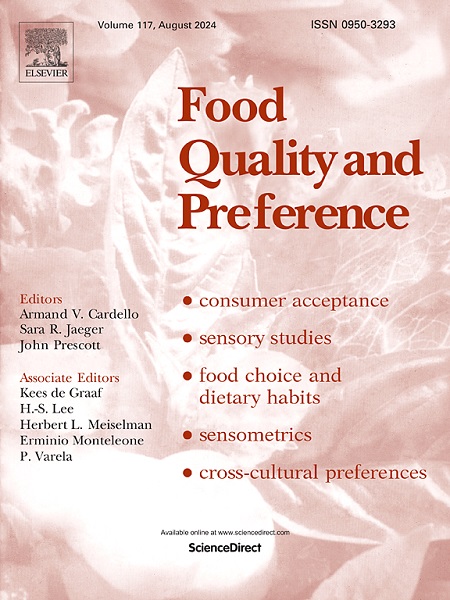The impact of front-of-package design features on consumers' attention and selection likelihood of protein bars: An eye-tracking study
IF 4.9
1区 农林科学
Q1 FOOD SCIENCE & TECHNOLOGY
引用次数: 0
Abstract
The current regulatory framework permits sports food manufacturers to incorporate a variety of voluntary label claims/icons on the front-of-package (FoP) of their products. This study examined the influence of label design features relevant to protein bars on individuals' visual attention and selection likelihood. Eight experimental FoP labels were created, concentrating on three distinct features, each identified as an area of interest (AOI). These features were allocated in a dichotomous manner within a 2 2 2 design: AOI 1 = ‘high protein’ vs ‘sports bar’; AOI 2 = ‘10 g protein/serve’ vs ‘25 g protein/serve’; AOI 3 = ‘dietitian approved’ vs ‘sports celebrity’. Labels were presented in a semi-randomised order and viewed individually for 15 s by participants. Eye-tracking metrics included time to first fixation (TFF), total fixation duration (TFD), fixation count (FC), and visit count (VC). Selection likelihood ratings were captured using visual analogue scales (0–100 mm). Despite receiving the least amount of attention, protein content was most influential on participants' selection likelihood ratings. Participants were more likely to select products displaying ‘25 g protein/serve’ than ‘10 g protein/serve’. These results provide insight into FoP label elements that influence consumers' willingness to select protein bars and may help guide label design enhancements to attract consumer attention and better cater to their preferences.
求助全文
约1分钟内获得全文
求助全文
来源期刊

Food Quality and Preference
工程技术-食品科技
CiteScore
10.40
自引率
15.10%
发文量
263
审稿时长
38 days
期刊介绍:
Food Quality and Preference is a journal devoted to sensory, consumer and behavioural research in food and non-food products. It publishes original research, critical reviews, and short communications in sensory and consumer science, and sensometrics. In addition, the journal publishes special invited issues on important timely topics and from relevant conferences. These are aimed at bridging the gap between research and application, bringing together authors and readers in consumer and market research, sensory science, sensometrics and sensory evaluation, nutrition and food choice, as well as food research, product development and sensory quality assurance. Submissions to Food Quality and Preference are limited to papers that include some form of human measurement; papers that are limited to physical/chemical measures or the routine application of sensory, consumer or econometric analysis will not be considered unless they specifically make a novel scientific contribution in line with the journal''s coverage as outlined below.
 求助内容:
求助内容: 应助结果提醒方式:
应助结果提醒方式:


